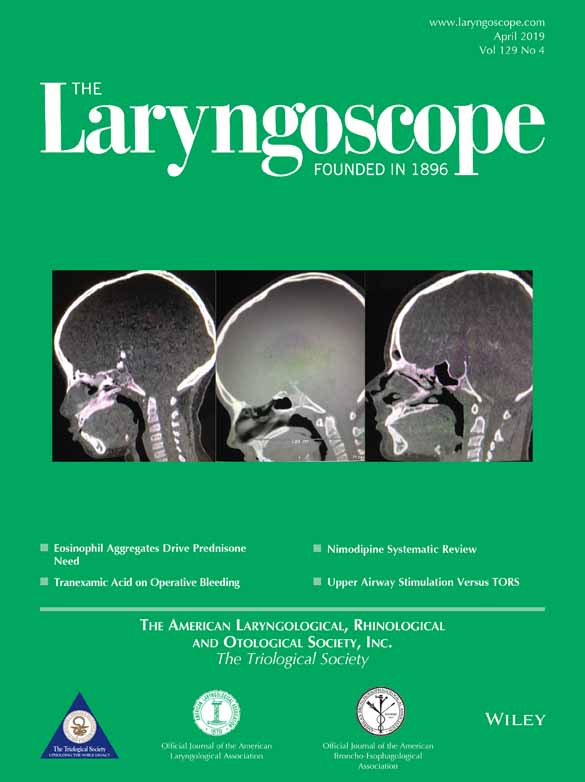Cervical slide tracheoplasty in adults with laryngotracheal stenosis
Presented at the American Broncho–Esophagological Association at Combined Otolaryngology Spring Meetings 2018, Washington, DC, U.S.A., April 20, 2018.
Dr. Rutter is a consultant for Bryan Medical and receives royalties for the Aeris airway dilation balloon. Dr. Khosla is the principle investigator on a National Institutes of Health R1 grant entitled “The Relationship between Vortices, Acoustics, and Vibration in Vocal Fold Asymmetries,” which is unrelated to this work. The authors have no other funding, financial relationships, or conflicts of interest to disclose.
Abstract
Objectives
1) Evaluate success rates for adults undergoing cervical slide tracheoplasty. 2) Examine complication rates of slide tracheoplasty in adults.
Methods
A retrospective cohort of adults > 21 years of age undergoing cervical slide tracheoplasty for tracheal stenosis between October 2011 and August 2017 was reviewed. Comorbidities, stenosis grade, etiology of stenosis, primary versus revision surgery, complications, and number of adjunct endoscopic procedures required postoperatively were evaluated.
Results
Nineteen patients (63% female) underwent cervical slide tracheoplasty during the study period (median age 30 years, range 21–70). The most common etiology of stenosis was iatrogenic (68%), followed by congenital etiologies (26%). Fifty-eight percent of patients had undergone a previous open airway procedure. Thirty-nine percent were tracheostomy-dependent prior to surgery, and the remainder had severe exercise intolerance. Sixty-three percent were successfully extubated on the operating room table at the end of the procedure. Six (32%) patients experienced surgical complications, including one anastomotic dehiscence, three neck abscesses requiring incision and drainage (I&D), and replacement of adjunctive airway device in two patients. Seventy percent of the patients required ≥ 1 endoscopic dilation in the first 12 months following surgery, with a median of one (range 1–8) procedure. At most recent follow-up (median 8 months, range 4–64 months), 18 of 19 (95%) of patients had minimal airway symptoms without need for tracheostomy. The one patient who was not decannulated expired of a presumed cardiac event prior to decannulation.
Conclusion
Cervical slide tracheoplasty is an excellent reconstructive option for adult patients with tracheal stenosis, including those with history of previous airway reconstruction.
Level of Evidence
4 Laryngoscope, 129:818–822, 2019




